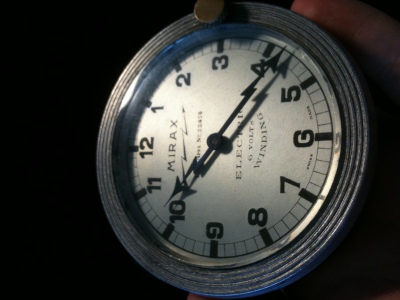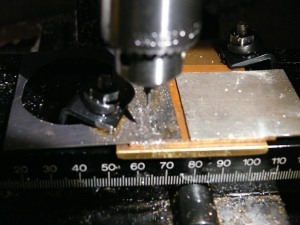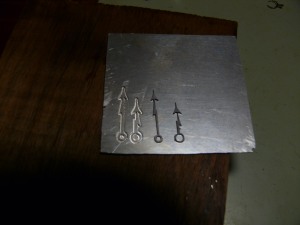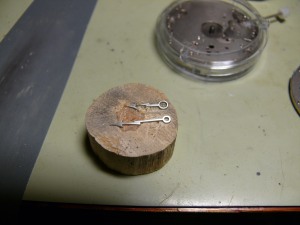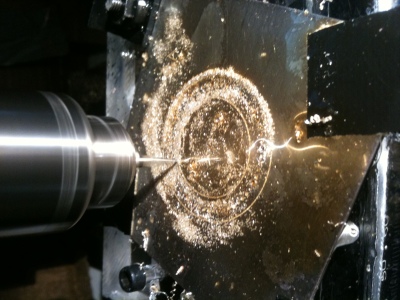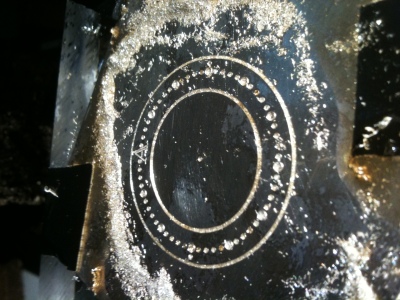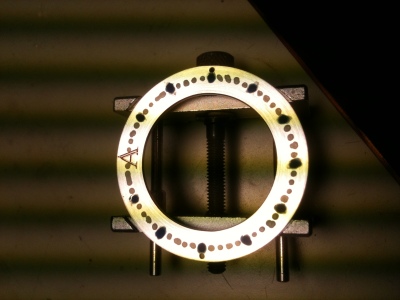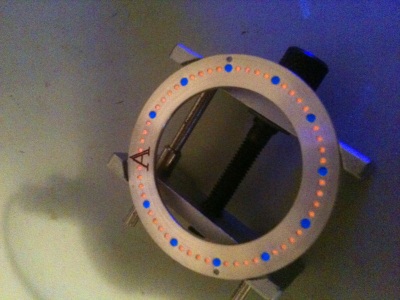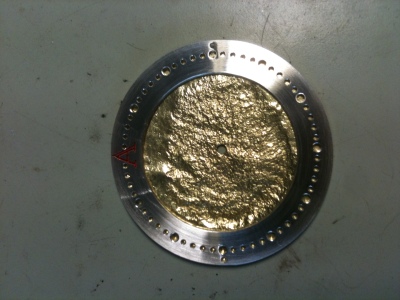The design brief I gave myself for the hands and dial of the watch were fairly straight forward, I wanted it to be easily readable, while being a bit “special”.
The hand design was basically set as soon as I saw this clock, all that I had to do was reduce the size, and decide on the material to be used.
I started by taking a picture of the clock as perpendicular as I could, then importing that into my CAD program, I traced around the hands, and adjusted a few lines to make it look a little smoother. I then reduced the overall size of the hands proportionally so that the very tip of the minute hand would touch the centre of all of the markings on the chapter ring.
I cut the outline of the hands out using my CNC mill. Just in case, I cut one set out of Titanium, and another pair out of sterling silver.
Just looking at the 2 sets side by side, the silver ones are way too thick, I file the rough edges off the titanium set, and do a quick polish of the hands to almost a black polish. While I’d like to anodise these to a nice blue, I am running out of time and if I wreck this set I won’t have the time to re-finish this set.
While I’d like to spend more time to make the dial really special, I know that it will have to be fairly simple.
I do a quick mock up on the computer, with a simple silver register ring with different coloured luminous dots, an A at 12 o’clock (for Ashton, I tried using a T but it looked too much like the old Tissot logo), and a reticulated gold centre.
Reticulation is a method of treating the metal by heating and pickling the metal until there is a distinctive difference in the outer layer of the metal to the inside, then heating it to almost melting point, at which time the metal on the inside pulls together, wrinkling the outer layer in a random fashion. While making the entire dial out of this metal would be almost illegible, having the centre made of it will create a nice colour difference from all of the grey and black of the case and register ring.
I cut the ring out of a solid piece of silver, with the dots and A pre-engraved, though still needing a little clean up.
The register ring is satin finished in the lathe, and all of the holes are tapered a bit to allow the luminous material to hold in better.
I have a number of luminous compounds, and want to use a blue for the hour markers and orange for all of the minute markers, though these colours are only visible when dark, or under an ultraviolet light. I decide to colour the blue luminous with a blue ink, so that even normally the markers are blue as well. to find a suitable binder or glue to stick the luminous material to the dial takes quite a few attempts, some of them shrink, some are too runny, and others form a putty like substance.. Eventually I get one that sticks to the holes and retains its shape, while still being luminous enough to be visible after dark.
I make a piece of reticulated gold, cut a hole for the centre of the dial and also an outline matching the register ring.
